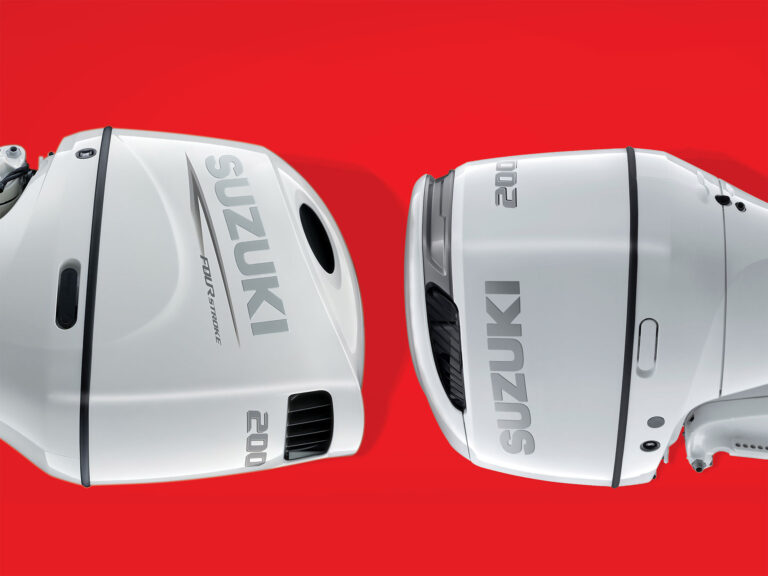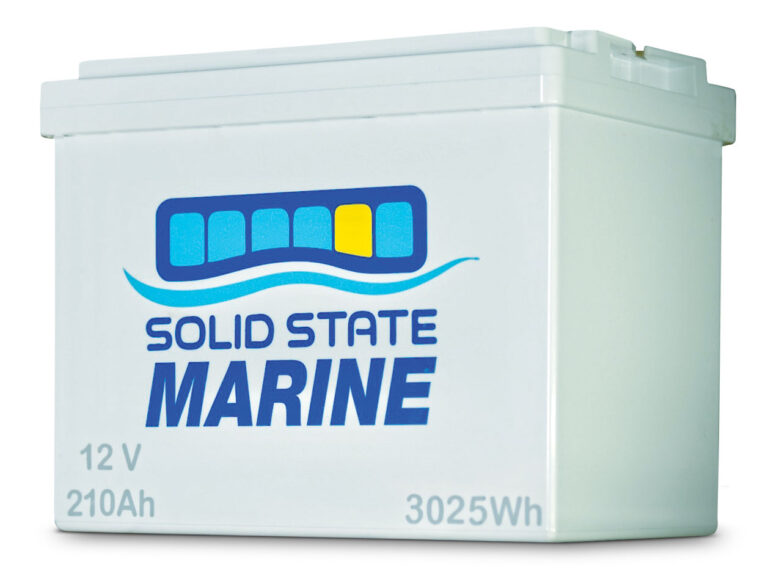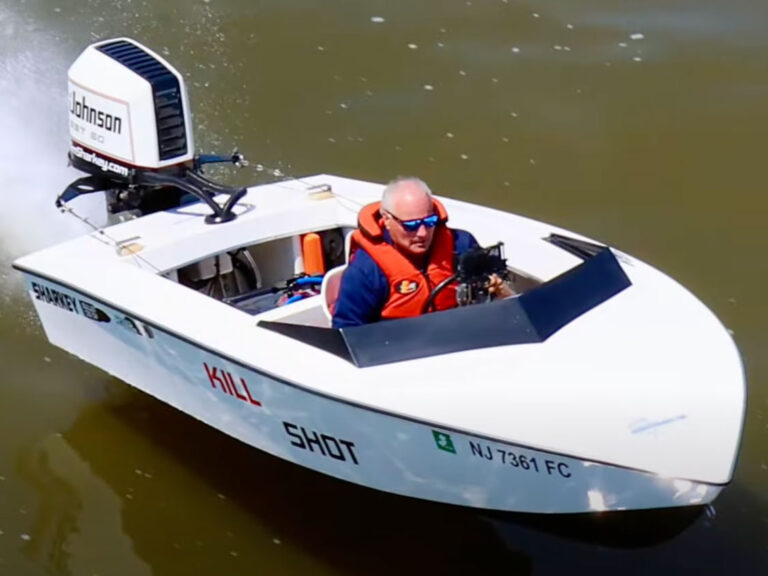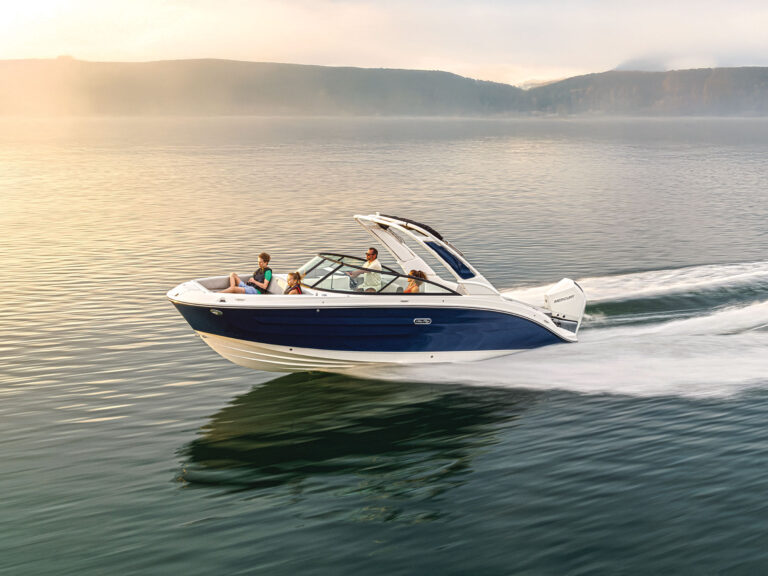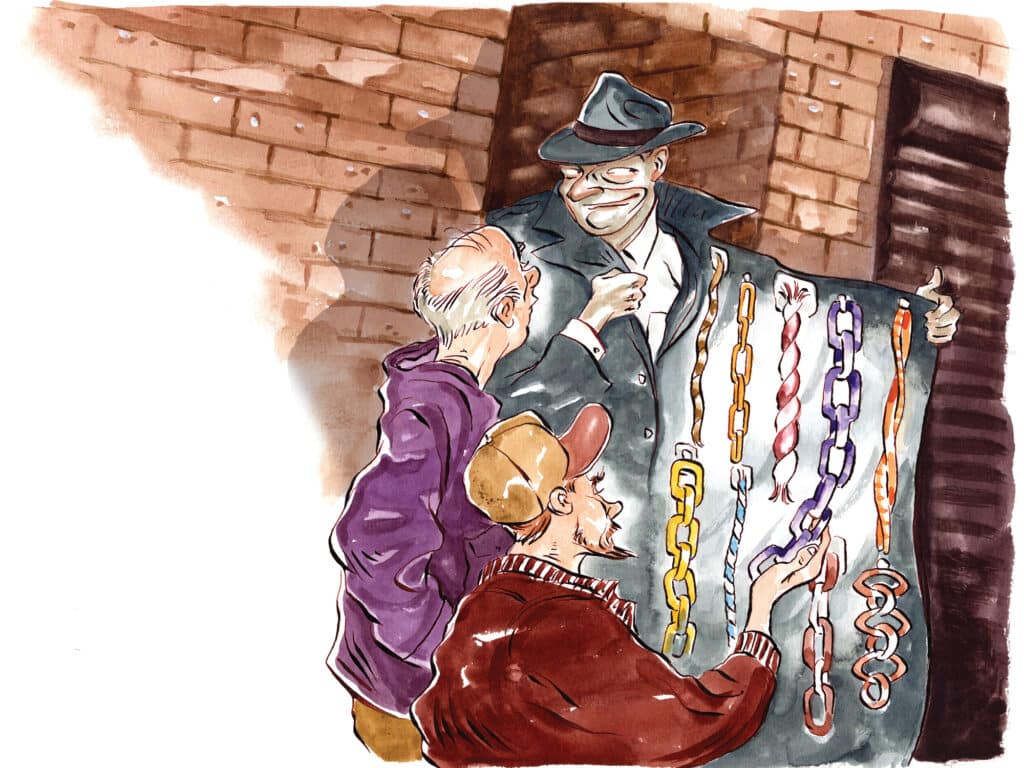
Whether it’s the line tying you to a dock, the chain leader connected to your anchor, or the rope that pulls you while water-skiing, rope and chain are a vital part of boating. No matter how you enjoy time on the water, doing so would be impossible, or at least a lot more challenging, without rope and chain.
But just how many different types of rope and chain are there? What’s the difference between them? And why might you choose one over the other? You want to boat as safely and conveniently as possible, right?
Well, get your geek on. We can’t describe everything possible about rope and chain in this article. But you’ll learn more about rope and chain than you can shake a shackle at. Let’s get started.
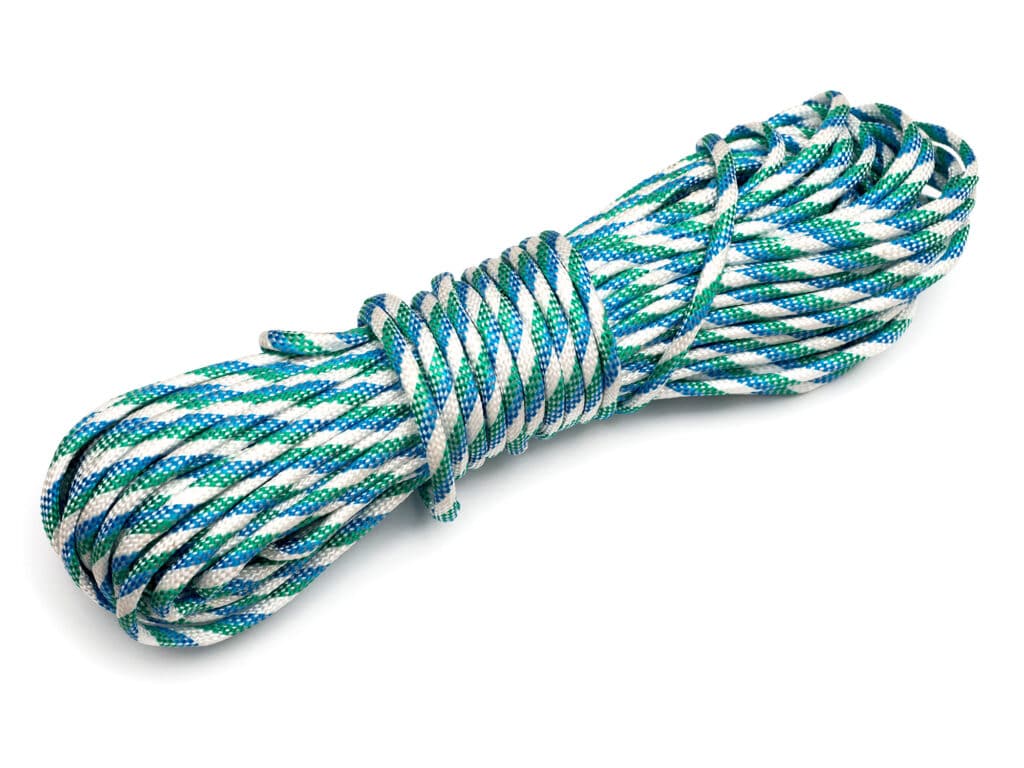
Rope
What’s the difference between rope and line? The US Navy says that the only rope aboard a ship is the bell rope. That seems preposterous. But what the squids are saying is that a line is a rope with designated purpose. An anchor line or dock line—more specifically, bow lines, stern lines and spring lines—start life as a length or coil of rope. Once its cut to length and put to use, it becomes a line. The bell rope gets a pass, probably due to tradition. In the same spirit, we’ll define the rope used to tow a tube, wakeboarder or water-skier as a towrope.
Starting with rope, it sometimes serves alone as an anchor line. More often, it is used as just one component—along with shackles, swivels and chain—to make up an anchor rode. So-called all-chain rode is also used. We will cover those in the chain section. Either alone or as part of a rode, the anchor line performs several functions.
First, it must be of sufficient strength to hold the boat. Safe loading limits can be found from the rope-maker. For example, 1/2-inch three-strand nylon is rated at a tensile strength of about 5,800 pounds. But what’s more important is the safe working load, which many experts, according to ASTM testing methods, deem to be between 10 and 12 percent of tensile strength. Furthermore, knots in a rope can reduce its strength by half. This is why splicing, which affects working load much less, is preferred for dock-line loops and anchor-rode connections. So, the safe working load of 1/2-inch three-strand is about 580 pounds, maybe half that with knots in the line. Most boats under 30 feet can be safely anchored and tied to the dock with 3/8-line (3,500-pound tensile strength). But experienced boaters often opt for larger-diameter line, like 1/2-inch, because it is easier to grip, especially if they will be hauling the anchor by hand. At your marine store, grab a length of the proposed line and yank on it. Have a buddy or store clerk hold the other end. Think about how hauling it up wet and heavy will feel. Also think about the stress involved when tied to a fixed dock during an astronomically high or low tide, or the stress on the anchor line during a squall that comes up in the night.
Line is expensive and heavy. But it is not a place to over-economize.
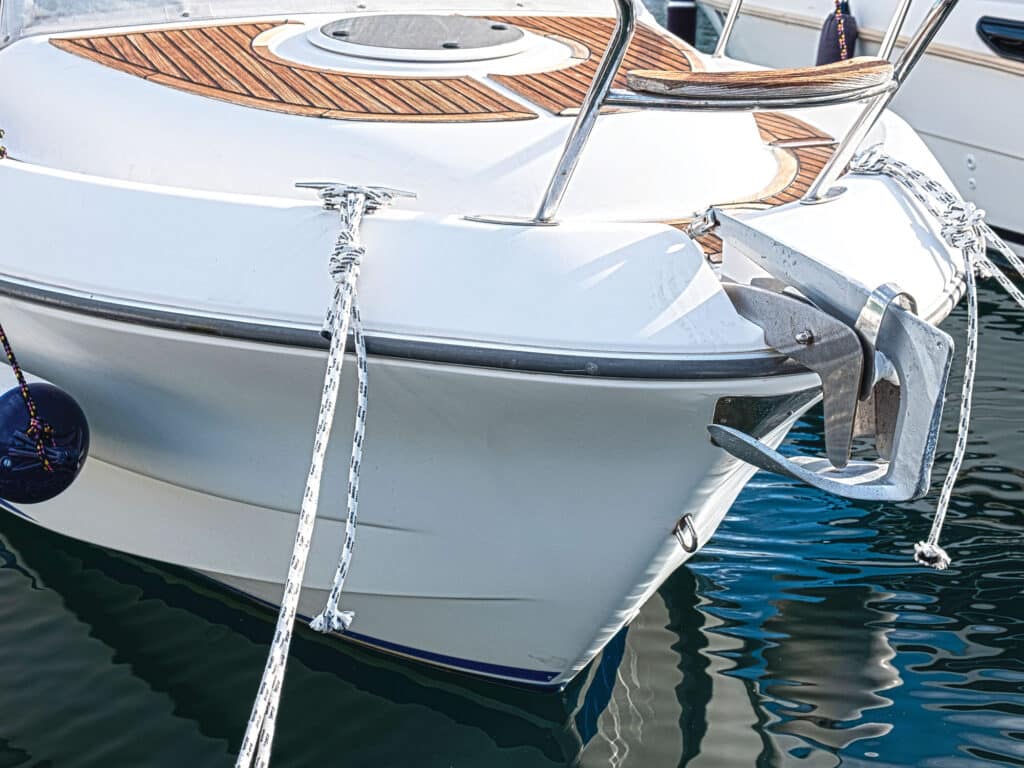
A caveat: Make sure the line matches the size of your boat’s cleats. As a rule of thumb, have 1/4 inch of line diameter for every inch of cleat-horn length. This will ensure you have enough cleat to properly belay at least two lines on any cleat. And don’t forget those oversize lines at the fuel dock. They need to fit too.
Regarding feel, braided line will feel better in your hands. But it does not stretch as much as three-strand. This comment leads to the second job of an anchor line: to provide shock absorption.
On a calm day with no wind or wakes, stretch might not matter much. But when your boat is anchored in choppy or wave- or wake-ridden waters, the boat jerks against the anchor line with tremendous force. This can cause stress-cracking around cleats and chocks, or worse. The line stretch provides shock absorption, reducing the stress on your boat’s cleats and chocks. You don’t have to anchor through a storm to have your boat damaged. The stress works on the boat every time your boat rides to the hook. One day, you’ll notice the stress cracks that “suddenly” appeared around the base of your cleats.
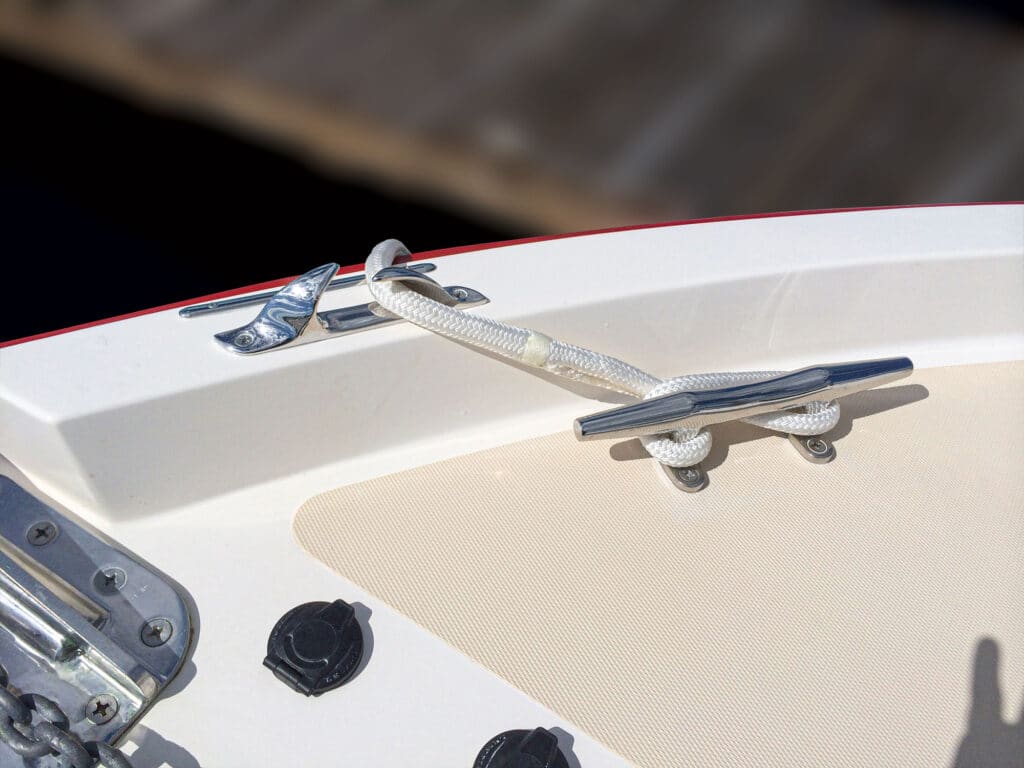
With its added stretch per diameter, three-strand makes a superior anchor rode compared to braided line. But, like anything in boating, there are exceptions. For mostly calm water and occasional use, combined with a nicer hand feel, braided line can serve as your anchor line. It comes down to how much you anchor and where.
The above puts cost aside because braided line almost always costs more than three-strand. But the third job an anchor line needs to do will raise the cost of the three-strand line designed to do it. If you have a windlass on your boat, you will want your line to be a “hard lay” type. This refers to the manufacturing process that results in a more abrasion-resistant rope. Hard-lay line can stand up better to the chafe caused by going through the windlass. It is sometimes sold pre-packaged as a rode under “windlass line,” whether you buy it that way or make up your own rode (see boatingmag.com/how-to-construct-anchor-rode).
A final characteristic for lines in use with a windlass is twist resistance. A windlass, in turning the line from horizontal to vertical, can induce twist. Left unchecked, this twist results in hockling. A hockled line hopelessly twists and doubles up on itself, making it unusable. A swivel shackle is one way to help prevent hockling because it allows the line to untwist as the anchor is pulled to the surface.
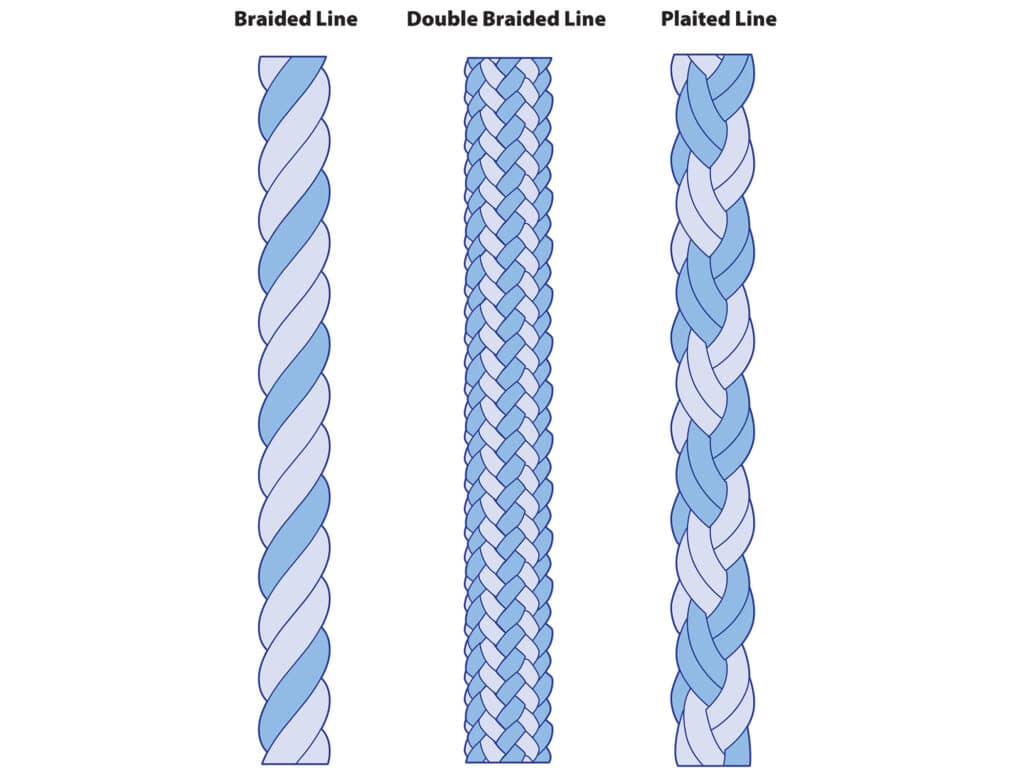
Another solution is to use what’s called plaited rope, sometimes referred to as eight-plait, offered by companies such as Buccaneer Rope Company. This special rope looks like the offspring of a braided mommy and a three-strand daddy. This special construction allows it to resist twist. I can attest that it works. It is more expensive.
When choosing dock lines, you want to consider many of the same qualities you’d select for an anchor line: Make sure it fits your cleats, make sure it’s of sufficient strength, and make sure it’s comfortable for you to grip and handle. Braided rope, despite its lower stretch, makes a fine dock line or mooring painter, especially for tying up day in and day out. The difference in stretch is mitigated by the short length of a dock line compared to an anchor line. Braid offers a nicer hand feel, stays limp over a longer period of time compared to three-strand, and comes in snazzy colors.
Roll Your Own
If you are going to splice up your own anchor rode and dock lines, great! For three-strand, choose nylon over Dacron—often sold in big-box stores—because nylon splices easier. Also, nylon doesn’t get fuzzy and allow its individual threads to pull out like Dacron or Dacron-nylon mixes.
Given the need for handles and specific lengths, I recommend purchasing pre-made ski and boarding towropes.
If you are going to make your own tubing towrope, purchase polypropylene rope. Poly floats, lessening its chance of getting sucked into your props. (But it can still happen, or so I have heard.) You can splice this up with clips for your transom rings or add a loop for a ski tow on one end, and purchase a quick-release tube connector for the tube end.
You must make sure that the rope you choose for towing a tube carries the proper weight rating. You want approximately 1,200 pounds of tensile strength per rated rider size. That means a minimum 3/8-inch line for a one- or two-person tube, and 3/4-inch line for a six-person towable. And you must be able to make splices and knots properly. If the line breaks while you are towing the tube, it puts the riders at great risk. If in any doubt, rated tubing lines can be purchased from towable-makers, such as Airhead and WOW.
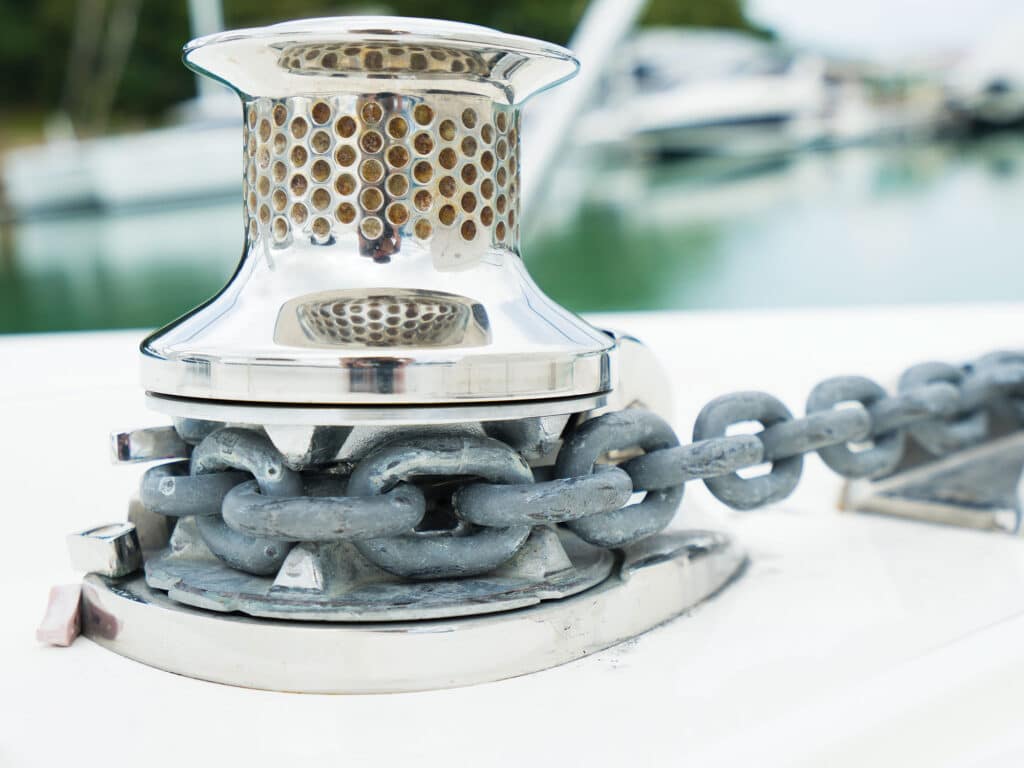
Chain
Chain serves aboard recreational boats as one part of an anchor rode. It can be used in a short length along with a long length of rope (anchor line once put to use as part of an anchor rode). Or it can constitute the majority of the rode, the other components being shackles or swivels.
Most of the time, chain is used as a leader between the anchor and line. It serves the purpose of helping the anchor bite more quickly. It does so because its weight holds the shank of the anchor more horizontal than rope does. This lets the anchor flukes dig in sooner as the pull of the boat comes to bear.
Chain also provides chafe protection on the part of the rode in contact with the bottom of the lake or ocean. Rocks, gravel and more can cut through line. As with the anchor-cleat stress cracks described earlier, it may not happen all at once, although it could. But over time, the end of the rode near the anchor gets beat up and chafed every time you anchor. It could part one day without warning. Many boaters swap their anchor line end for end periodically for this reason. Always inspect your rode.
You’ll have a choice of chain finishes. There is galvanized chain, rubber-coated chain or unpainted chain. Freshwater boaters might not need galvanized, but coastal anglers require it. Rubber-coated is quieter and less likely to scrape your deck, though the coating can make it stiff. Plastic coating liquids in which you can dip chain are also sold as a DIY product by Harbor Freight and other companies.
Chain comes in any number of grades, most of which don’t apply to recreational boaters. Proof coil is a general-purpose chain that may or may not be galvanized. The other common chain is BBB chain (usually spoken as “triple B,” which means “bend before break.”) Triple B chain is hot-dipped galvanized. There is also HT (high-tensile) chain, which is stronger for its size. The main concern when selecting chain, though, is the size.
Read Next: Windlass Safety Tips
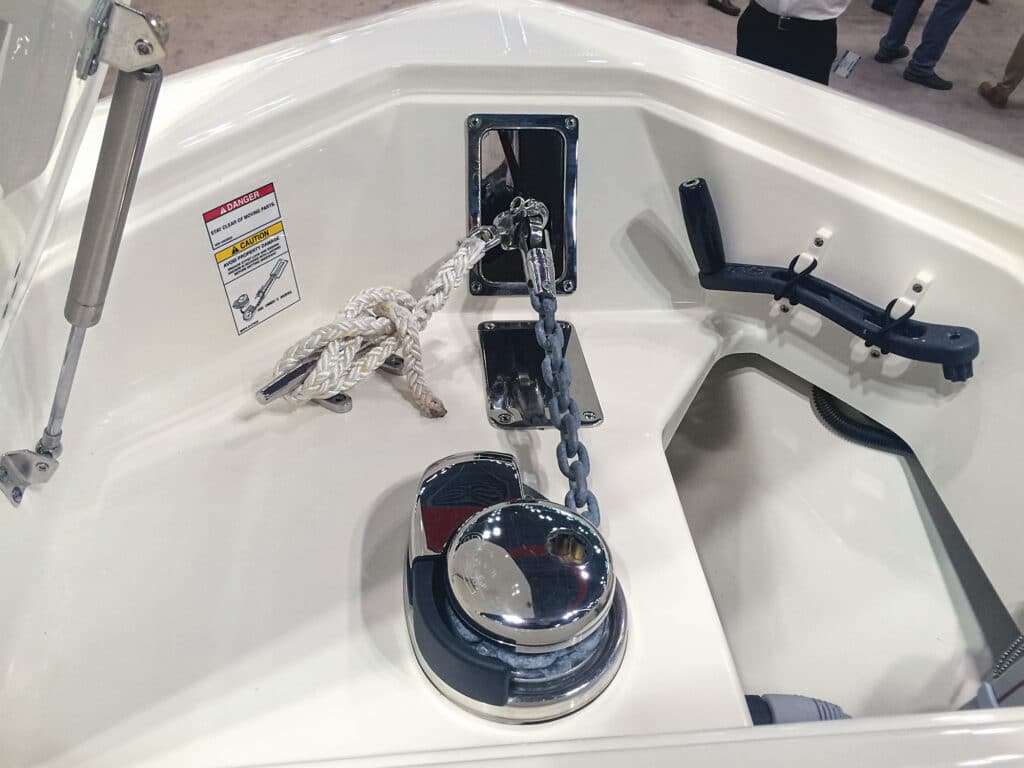
The size of any chain is the diameter of the links. But different chains can have the same link diameter, while the length and width of the links vary. This is especially important if you use a windlass because the gypsy—the toothed gear that grabs the chain—will be sized for a specific link dimension of chain. Read your windlass manual or call the maker to verify the specific chain required for your windlass.
When sizing chain, it’s important to look at the system it will be part of. The link size determines the shackle size that can be inserted through it. The shackle size determines the size of the thimble protecting the spliced loop that will fit inside the shackle properly. The cuff size determines the size of the line. The size of the line determines the size of your boat’s cleats and possibly its windlass.
Start with the boat, size the line, and let everything else follow.
Some boats fitted with windlasses, usually larger ones, can use an all-chain anchor rode. This consists of just chain and shackles, and maybe a swivel. An all-chain rode allows the boat to lie to a shorter rode, which is helpful in tight anchorages. This is due to its greater weight. An all-chain rode does not stretch but still provides the required shock absorption. It does this because of the catenary. Like overhead power lines, there is a built-in droop to an all-chain rode. A surging boat takes out some of the droop and then releases it.
As for strength, the chain is generally going to be stronger than the line when sized as indicated above. Typically, use 1/8 inch of chain diameter for every 1/4 inch of line diameter, adjusting up in size depending upon local conditions. (Rough bottom warrants heavier or more abrasion-resistant chain.) High-tensile chains are lighter for the same strength and come into play mostly for larger boats using an all-chain rode.
The Bitter End
The bitter end isn’t a great and famous music venue. (Well, maybe it is.) For our purposes, the bitter end is the end of a line. For example, the end of your anchor line that’s tied to the boat is its bitter end. The bitter end of a dock line is the end without the loop in it. And the bitter end of this story is here. I hope you can more confidently equip your boat with rope and chain after reading it.
Trailer Safety Chain
A very important chain for boaters is the trailer safety chain. This chain type comes in ratings by the Society of Automotive Engineers: SAE Classes 1, 2, 3 and 4.
| Safety Chain or Trailer Classification | Breaking Force (minimum) |
| Class 1 | 2,000 lb. (8.9 kN) |
| Class 2 | 3,500 lb. (15.6 kN) |
| Class 3 | 5,000 lb. (22.2 kN) |
Class 4: The strength of each length of safety chain and its attachments shall be equal to or exceed in minimum breaking force the GVWR of the trailer (basically, the total weight of the tow vehicle plus the trailer tongue weight).





